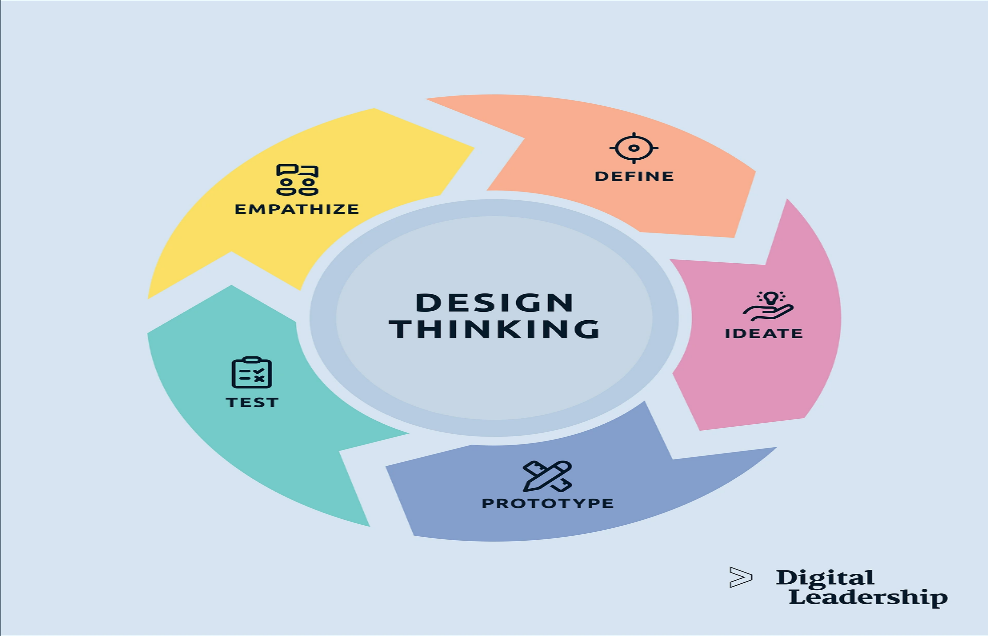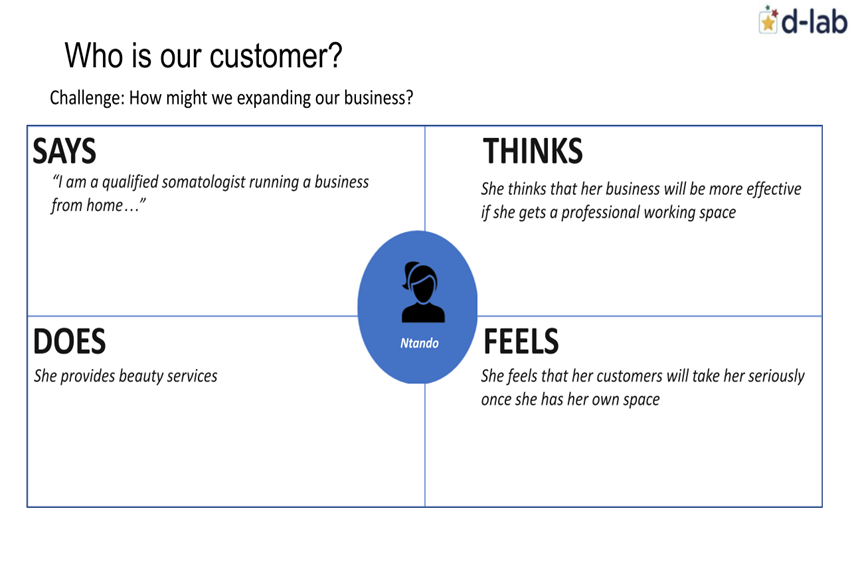

Ayanda Dladla
Design thinking: Its contribution to work readiness and employability
"In my experience, design thinking is more than a method—it is a way of thinking. It focuses on understanding others (empathy), working together (collaboration) and iterative problem solving. A successful student is therefore not just someone who gets good grades; they also need to be good at dealing with tough situations and figuring out how to make things better.
Graduates, also need to be able to identify problems; try to empathise and to understand how others feel; come up with new ideas; experiment and try out different solutions, and keep refining these based on feedback. Additionally, they need to be great at teamwork, recognising that different viewpoints and perspectives can lead to better results. These graduate attributes are a great recipe for student success, contributing to work readiness and employability".
The short clip below, provides a very basic understanding of design thinking.
Video: What is Design Thinking? (Duration: 36 seconds)
Source: https://www.youtube.com/watch?v=gnWj97CEjeo
My introduction to design thinking
The d-lab programme, https://d-lab.co.za/ stresses the importance of interns grasping the concept of design thinking before commencing employment. Design thinking gives students a new way to approach problems, encouraging experimentation with various ideas. This approach not only fosters resilience in students but also contributes to their overall success by equipping them to tackle challenges creatively, viewing them as opportunities rather than insurmountable obstacles.
In May 2023, I had the chance to join d-lab's work readiness programme. The programme aims at reducing unemployment in townships across South Africa. We were introduced to design thinking, and for six weeks we went through a Design Thinking’ Sprint – in which we were required to solve real life township business problems and present solutions to d-lab staff, and User experience Design Professionals.
Our task was to identify township business owners, understand their challenges (empathise) and follow the necessary design thinking steps to support them to solve their problems. Working in small teams, we followed the five stages of design thinking, Fig 1 and made use of the empathy map, Fig 2, below. These served to guide and direct us, facilitating our exploration of the design thinking process necessary to solve the township entrepreneur's business challenges.

Figure 1: The 5 Stages of Design Thinking
· Empathise: Understand and share feelings with the customer.
· Define: State your users’ needs and problems.
· Ideate: Challenges assumptions and create ideas.
· Prototype: Start to create/design solutions.
· Test: Try your solutions and request for feedback
Our assignment
We connected with Ntando, a somatologist, working from home in the Siyathuthuka township in Belfast, Mpumalanga. We started off by interviewing her to understand the business challenges she faced. We identified that not having a dedicated professional workspace, was Ntando’s main challenge (define).
We then brainstormed two potential solutions (ideate). The first involved renting and converting a garage, while the second proposed buying a shipping container. After some discussion, we developed a prototype, a drawing of how a shipping container could be adapted to being a suitable work space, thus helping to visualise its potential effectiveness. However, we eventually opted for the first option and proceeded with the idea of renting a garage.
Ntando took charge of renting the garage and began transforming the garage, gradually giving it a professional appearance (testing). Through testing the space with clients, we observed positive outcomes as Ntando’s business started to flourish, earning her trust and credibility among customers (feedback).

Figure 2: Empathy map
The empathy map is a tool used to understand users' thoughts, feelings, and motivations. Divided into four sections, "says," "thinks," "feels," and "does".
Using design thinking in the workplace
Working at Saide has been quite a journey of learning and growth. Initially I faced many challenges. Fortunately, my supervisor Ashton Maherry, and I regularly scheduled check-in meetings to plan and review my progress.
Utilising the principles of design thinking, I tackled my challenges step by step. We began by adopting an empathetic mindset, identifying the root issues, brainstorming potential solutions, and then experimenting with different methods and testing. This iterative process not only helped me overcome various challenges, but also enhanced my problem-solving skills and professional development significantly.
In conclusion
In my time at Saide, working on a Siyaphumelela Student Success Initiative, I have learnt that incorporating design thinking principles equips one with the ability to innovative and effectively tackle challenges encountered in both professional environments and daily life.